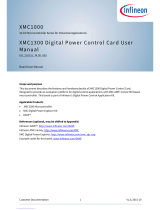List of abbreviations
HEMT ........................................................................................................................ high electron mobility transistor
CoolGaN™ IPS ........................................................................................................ CoolGaN™ Integrated Power Stage
MOSFET ........................................................................................ metal-oxide semiconductor field-effect transistor
SMPS .................................................................................................................................. switch-mode power supply
RDS(on) .............................................................................................................................. transistor on-state resistance
RDS(on,typ) .................................................................................................... transistor on-state resistance typical value
RDS(on,max) .............................................................................................. transistor on-state resistance maximum value
VF ............................................................................................................................... gate diode forward voltage drop
Vth .............................................................................................................................................. gate threshold voltage
Ion .......................................................................................................................................................... gate-on current
Ioff .......................................................................................................................................................... gate-off current
Rss ................................................................................................................. steady-state gate current tuning resistor
Rtr ...................................................................................................... transient switching speed dv/dt tuning resistor
Rtr_on ...................................................................................................................................... transient gate-on resistor
Rtr_off ...................................................................................................................................... transient gate-off resistor
CC ............................................................................................................................................. gate coupling capacitor
-VN ........................................................................................ negative gate voltage at the start of transistor off-state
-VNf .......................................................................................... negative gate voltage at the end of transistor off-state
VDD .................................................................................................................................................. gate-supply voltage
VGS .................................................................................................................................................. gate-source voltage
Iss .................................................................................................................................................. on-state gate current
Ion,max .................................................................................................................... transient maximum gate-on current
Ioff,max .................................................................................................................... transient maximum gate-off current
Qgeq ........................................................................................................................... equivalent switching gate charge
CGS .......................................................................................................................................... gate-source capacitance
QGS ................................................................................................................................................... gate-source charge
QGD..................................................................................................................................................... gate-drain charge
Cgd_ext ...............................................................................................................................external gate-drain capacitor
Cgs_ext ............................................................................................................................ external gate-source capacitor
Rdamp ...................................................................................... damping resistor in external gate-drain capacitor path














